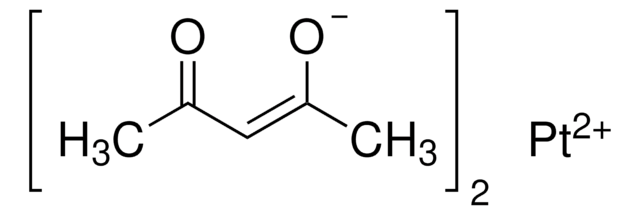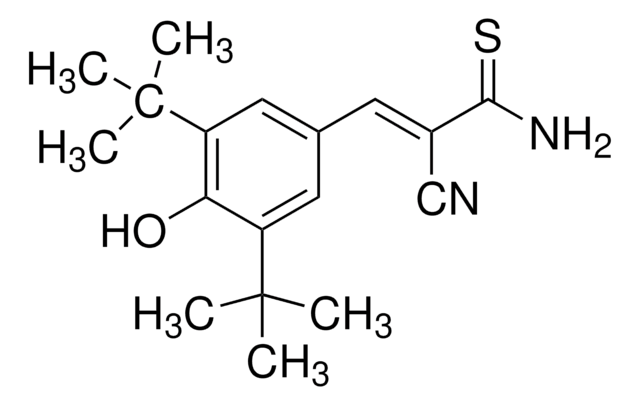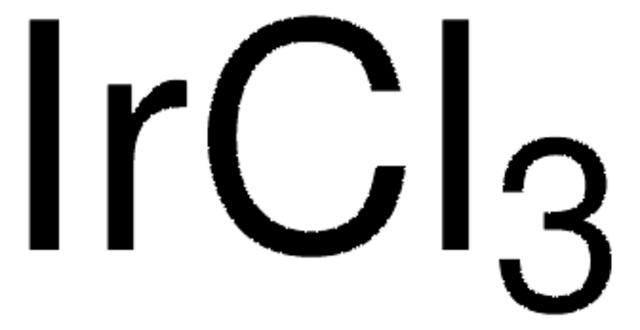333352
Iridium(III) acetylacetonate
97%
Sinónimos:
Ir(acac)3
About This Item
Productos recomendados
Nivel de calidad
Ensayo
97%
Formulario
solid
idoneidad de la reacción
core: iridium
reagent type: catalyst
mp
269-271 °C (lit.)
cadena SMILES
CC(=O)\C=C(\C)O[Ir](O\C(C)=C/C(C)=O)O\C(C)=C/C(C)=O
InChI
1S/3C5H8O2.Ir/c3*1-4(6)3-5(2)7;/h3*3,6H,1-2H3;/q;;;+3/p-3/b3*4-3-;
Clave InChI
HLYTZTFNIRBLNA-LNTINUHCSA-K
Descripción general
Aplicación
- Iridium coatings by metallo-organic chemical vapor deposition (MOCVD).
- Iridium oxide nanoclusters (IrOx). ZrOCoII−IrOx can be used as a catalyst in carbon dioxide reduction.
- MgF2–MgO supported Iridium catalyst for CO oxidation.(3)
Palabra de señalización
Warning
Frases de peligro
Clasificaciones de peligro
Acute Tox. 4 Dermal - Acute Tox. 4 Inhalation - Acute Tox. 4 Oral - Carc. 2 - Eye Irrit. 2 - Skin Irrit. 2 - STOT SE 3
Órganos de actuación
Respiratory system
Código de clase de almacenamiento
11 - Combustible Solids
Clase de riesgo para el agua (WGK)
WGK 3
Punto de inflamabilidad (°F)
Not applicable
Punto de inflamabilidad (°C)
Not applicable
Equipo de protección personal
dust mask type N95 (US), Eyeshields, Gloves
Elija entre una de las versiones más recientes:
¿Ya tiene este producto?
Encuentre la documentación para los productos que ha comprado recientemente en la Biblioteca de documentos.
Los clientes también vieron
Nuestro equipo de científicos tiene experiencia en todas las áreas de investigación: Ciencias de la vida, Ciencia de los materiales, Síntesis química, Cromatografía, Analítica y muchas otras.
Póngase en contacto con el Servicio técnico














